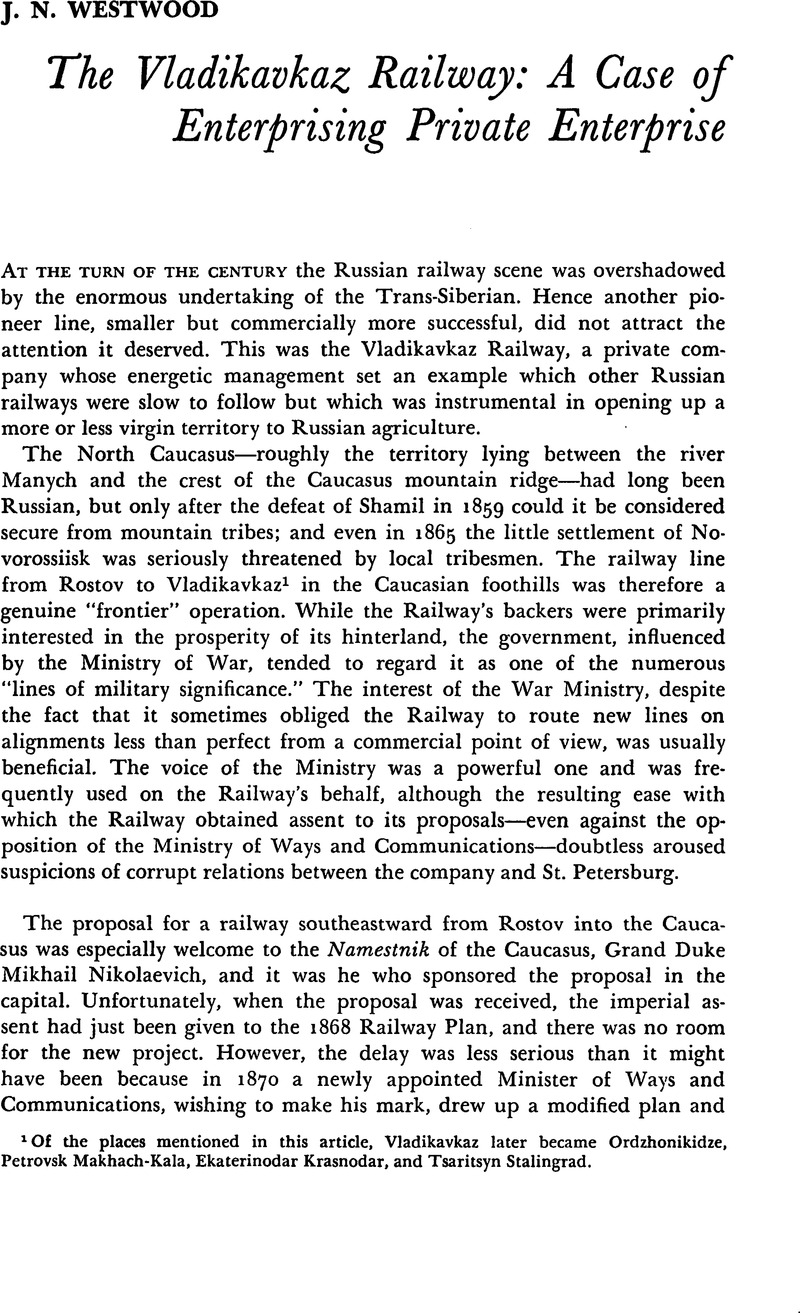No CrossRef data available.
Published online by Cambridge University Press: 27 January 2017

1 Of the places mentioned in this article, Vladikavkaz later became Ordzhonikidze, Petrovsk Makhach-Kala, Ekaterinodar Krasnodar, and Tsaritsyn Stalingrad.
2 N.A. Kislinskii and A. Kulomzin, Nasha zheleznodorozhnaia politika po dokumentam Arkhiva Komiteta ministrov (St. Petersburg, 1902), II, 34.
3 P., Spasskii, Istoriia torgovli i promyshlennosti v Rossii (St. Petersburg, 1910), II, 41 Google Scholar, gives a description of the Vladikavkaz Railway and also of the Novorossiisk port development.
4 British Parliamentary Papers, Vol. LXXIII (1890).
5 A. Radtsig, Vliianie zheleznykh dorog na sel'skoe khoziaistvo, promyshlennost’ i torgovliu (St. Petersburg, 1896), p. 136.
6 Kislinskii and Kulomzin, III, 273. Another reason for delay was the objections of the Ministry of Ways and Communications to the company's proposals for government financing.
7 Spasskii, p. 41.
8 Radtsig, p. 255.
9 Westwood, J. N., A History of Russian Railways (London, 1964), pp. 39 and 64Google Scholar, describes railway promotion and financing procedures. According to the official handbook Imperial Russian Government Loans (London, 1911), the proportion of government-guaranteed capital in the Vladikavkaz Railway was similar to that of other railways: in 1911 the outstanding capital of the Railway stood at 8 million rubles of shares (not guaranteed) and 176 million of government-guaranteed bonds.
10 Spasskii, p. 41.
11 A. A. Chuprov, Rechi i stat'i (St. Petersburg, 1909), III, 265.
12 The Times (London), Dec. 26, 1910.
13 P. Apostol and A. M. Mikhelson, La Lutte pour la Pe'trole et la Russie (Paris, 1922), p. 110.
14 A. B. Thompson, The Oilfields of Russia (London, 1908), pp. 26, 31.
15 Apostol, p. 203.
16 Russkii biograficheskii slovar’ (St. Petersburg, 1911), XXIII, 411.
17 See, for example, V. A. Rakov, Lokomotivy zheleznykh dorog Sovetskogo Soiuza (Moscow, 1955), p. 110.
18 A. F. Zaitsev, Ocherki po istorii zheleznodorozhnykh tarifov SSSR, Part I: Khlebnye tarify (Moscow and Leningrad, 1925), pp. 88, 135, 223, 236.
19 Kislinskii and Kulomzin, IV, 96.